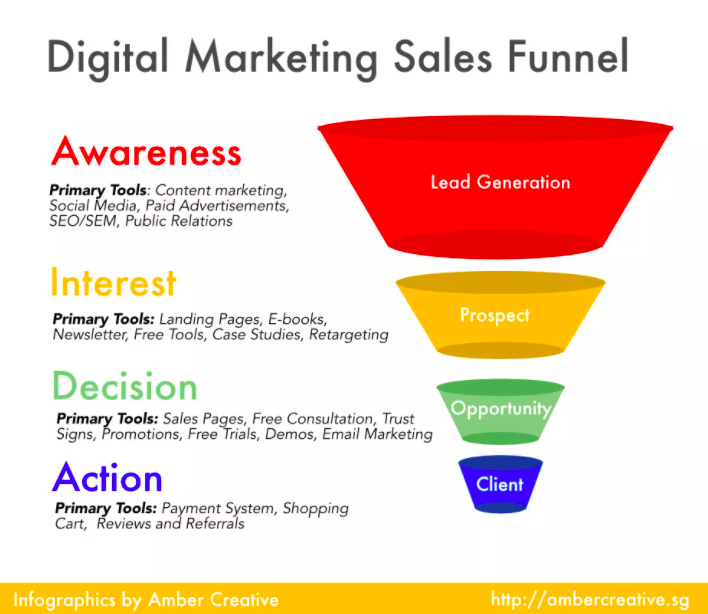
In the previous post Improving Your Digital Marketing Efforts with a Sales Funnel, we introduced the digital marketing sales funnel. In this post, we will walk through measuring the sales funnel stage by stage starting with the Awareness stage. Here we are generally talking about lead generation at the top of the funnel.
At this point, we can typically breakdown the incoming traffic into paid and organic. Paid traffic is basically paid ads, be it Facebook, Adwords, Content Discovery, even banner ads, etc. Organic traffic comes from SEO, articles, emails, and more.
Is it better to pay for ads or invest in content marketing?
Both are equally important and are used in different manners. Think of it as a paying vs farming, paying for ads normally gives an instant boost to traffic and possibly conversions. However, once you stop paying, all the marketing stops. With content marketing, you are setting the foundation for a larger reward down the road as your content matures, but you may not get as much out of it initially. It’s an initial pain to create the farm, but once it’s all ready, the trees will keep producing fruits. Generally, it makes sense to engage in both concurrently, assuming budget and expertise is available as they do help each other.
Paid Traffic
For paid traffic, it’s fairly easy to see what’s working because most ad platforms will have reports on impressions, cost per clicks, click-through rates as well as engagement.
- Impressions & Reach – Usually means how many times people have seen the ads
- Click-Through Rates (CTR) – The percentage of people who click on the ads are being shown the ads
- Cost Per Click (CPC) – The cost of each click
- Engagements – In social media ads, there usually is an engagement factor as well, which means anything from clicking to liking and commenting.
Does it make sense to go for maximum number of impressions?
It depends on the objective of the campaign. If the goal is to get as many people to see your brand, then impressions matter. If you are more focused on driving visits to your site, then pay more attention to the click-through rates and cost per clicks.
What is considered a good CPC and CTR?
Different industries, demographics, geographical regions have different median levels of CPC or CTR, so there is no one answer. However, by looking at similar companies, you might be able to have some ideas on that. It is reasonable to expect your agency to be able to give you some guidelines based on their past experiences.
Organic Traffic
Organic traffic generally means traffic coming to your website without you having to spend on advertising. They come from many sources, like search engines, social media, emails, referrals, direct to websites, and more. Organic traffic is certainly more difficult to attribute conversions to as there is a certain level of brand awareness that takes place.
So it’s hard to say if a person read an article which they liked and they came back the next day and buy something to have that article lead count as a conversion. However, even if the articles may not be directly linked to conversions, it still makes sense to have a solid content marketing strategy in place as it helps people get familiar with your brand and lessen resistance to buying something from you eventually.
Traffic
- Page Views – The number of times your webpages are viewed regardless of the viewer
- Visits – The number of people who have been to your website within a certain time period
- Unique Visitors – If a user has visited your website before, they will not be counted
- Sources of Traffic – Where the traffic came from, i.e. Facebook, Twitter, Google, Newsletter, Referral, etc.
Stickiness of Site
- Time Spent on Site – How much time the user spent on the website
- Bounce Rate – The ratio of people who left the website right after visiting without looking through the page
- Pages per Session – The number of pages an average user goes through before leaving the website
Search Engine Optimisation
- Search Engine Ranks – How high your website ranks for selected keywords or keyphrases
- Backlinks – How many other websites link to yours




